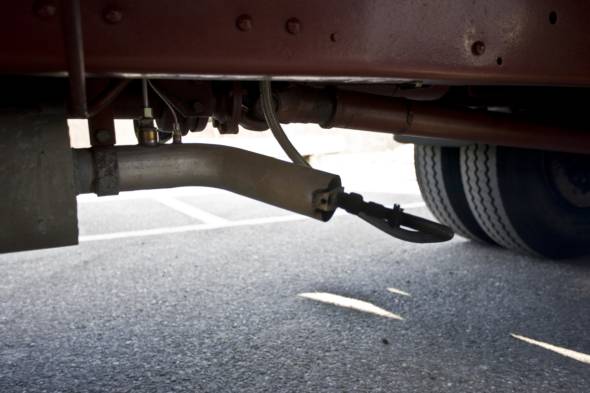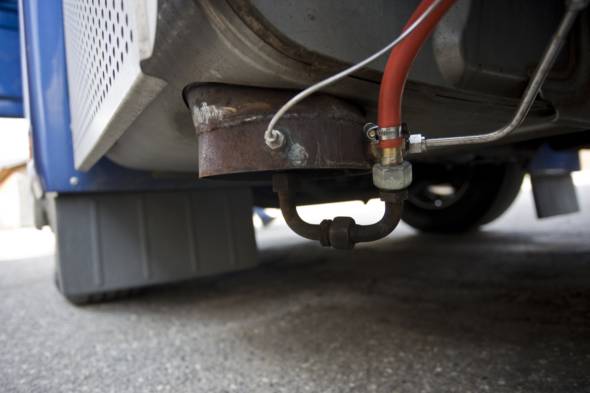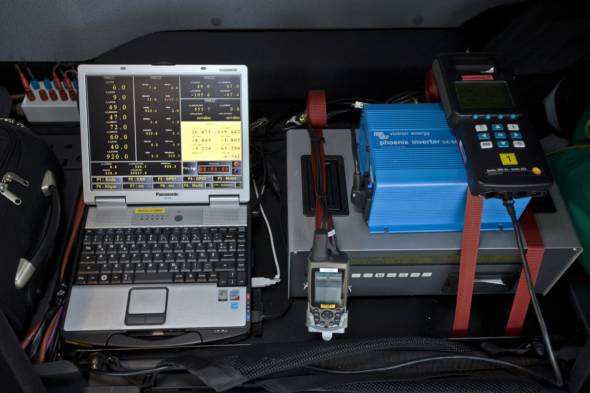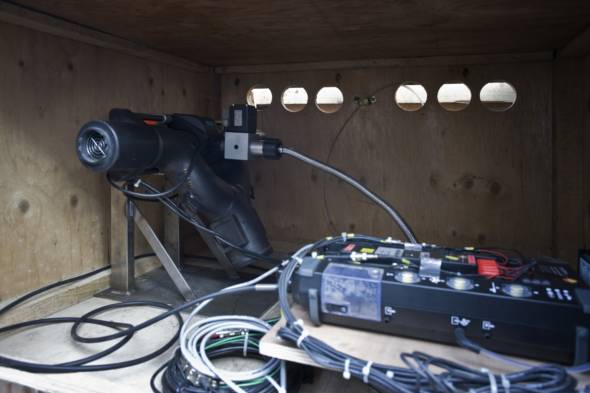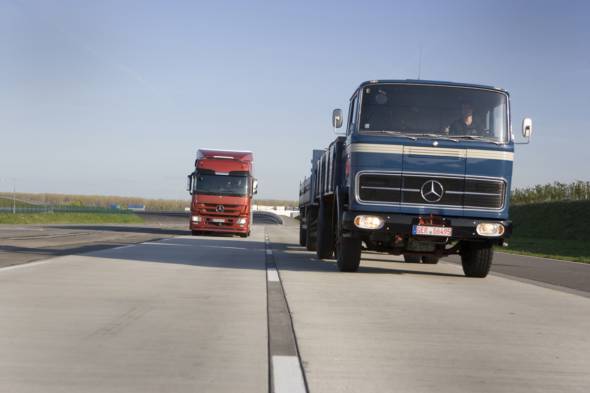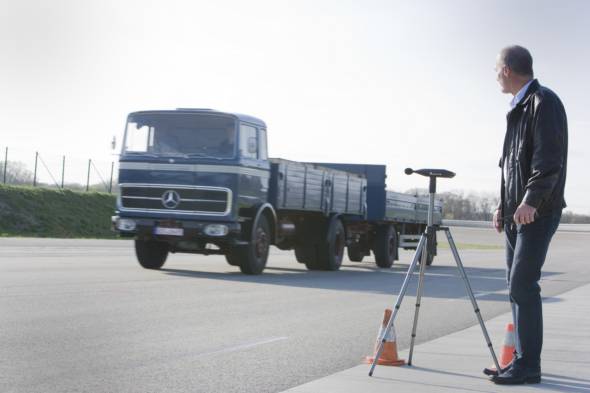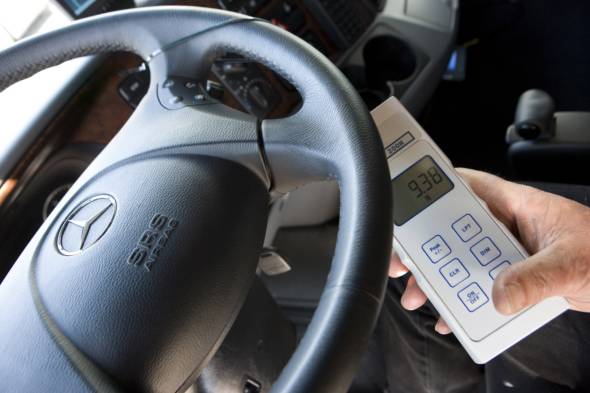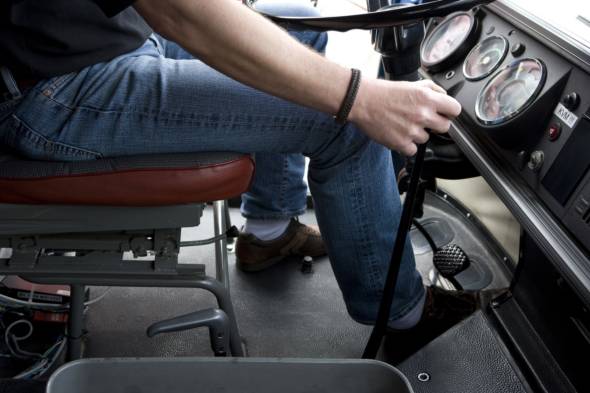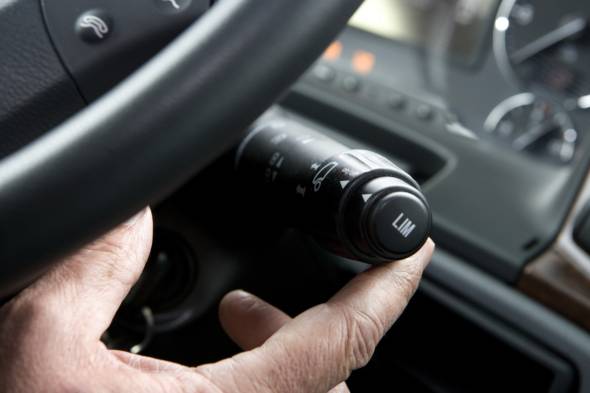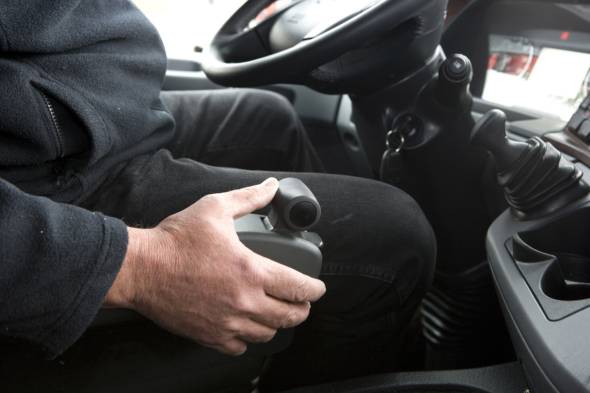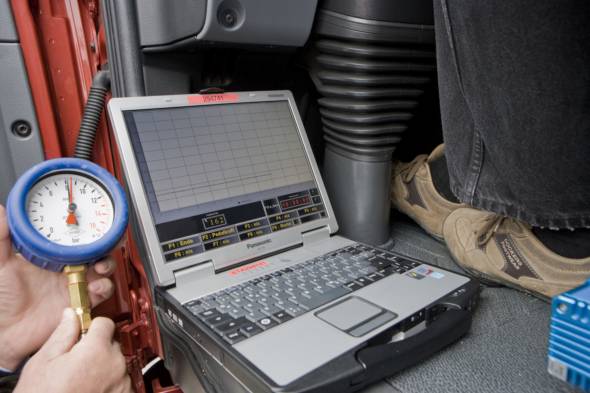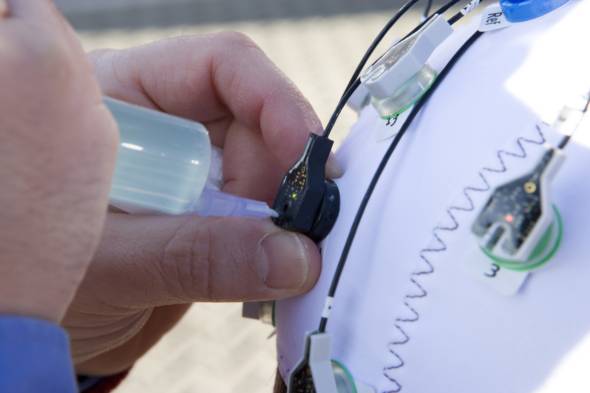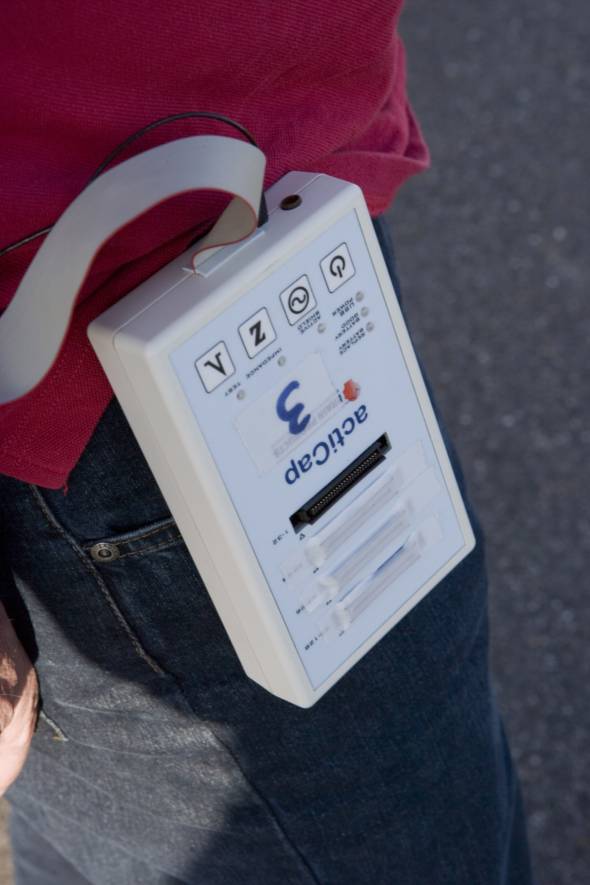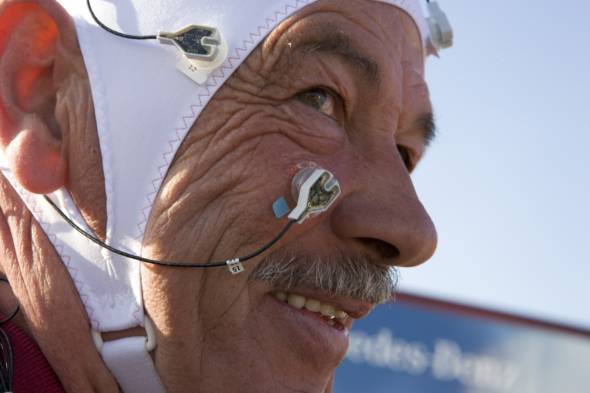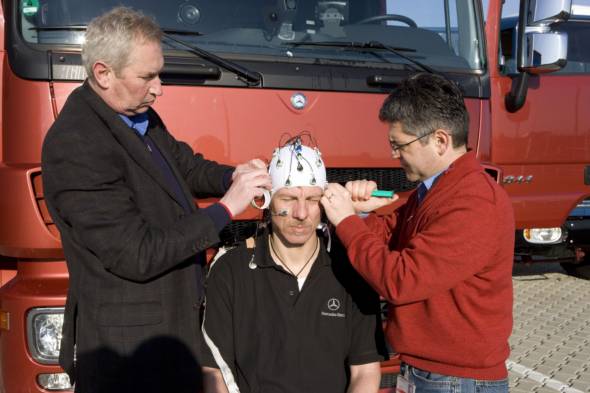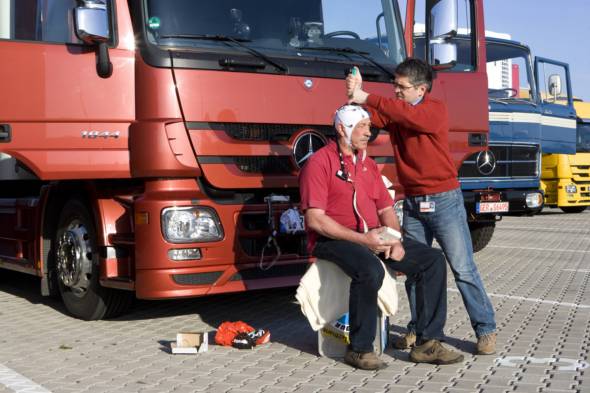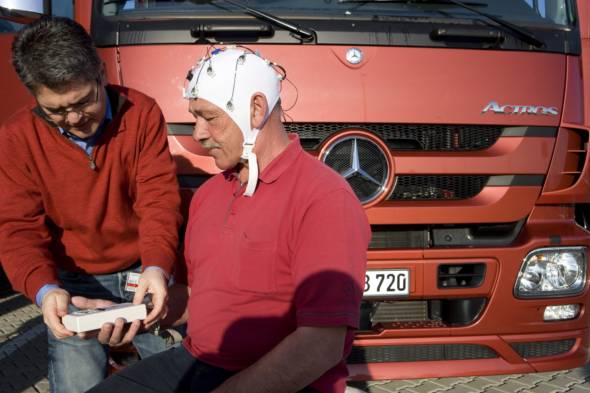From the LP 1620 to the Actros: 50 years of progress have drastically reduced the strain on drivers


- Enhanced ride comfort and intelligent assistance systems support today’s professional truck drivers
- World’s first truck test drive to investigate stress on drivers successfully completed
- ECG analysis of test drivers shows marked reduction in physical stress
- EEG measurements confirm markedly faster responses by drivers in the Actros

The comparative test drive began in the early morning. The starting point was the main gate of the Daimler assembly plant in Wörth. The tour was 542 kilometres long, leading via Stuttgart over the San Bernardino pass to the Swiss village of Lostallo.
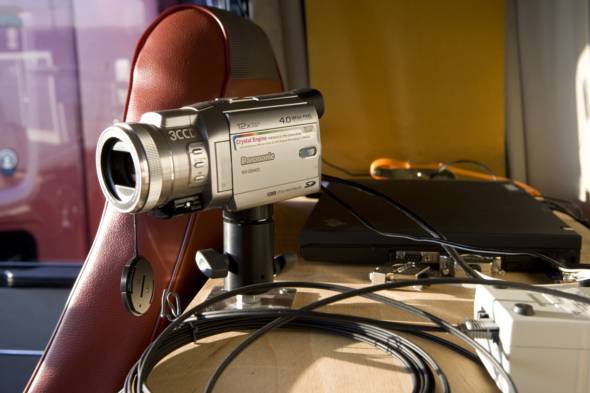
The two test vehicles were worlds apart: a modern Actros semitrailer/tractor combination rated at 440 hp competing against a 200 hp LP 1620 with trailer. The two vehicles are separated by around 50 years of progress resulting from development work in the field of commercial vehicles.

This is manifested in the Actros not only in the form of substantially increased power reserves, a fully automatic twelve-speed transmission and a wear-free retarder serving as an additional brake system to back up the electronically controlled high-pressure brake system. The Actros also features state-of-the-art assistance systems offering greater truck safety than would have been conceivable at the time of the LP 1620 (year of construction: 1964). These include:
- Telligent® distance control system, which automatically maintains the preset safety distance from the vehicle in front.
- Active Brake Assist which, in addition to automatically maintaining the preset safety distance, also initiates emergency braking at maximum braking force automatically on detecting an acute danger of a rear-end collision.
- Telligent® Lane Assistant, which emits an acoustic signal to warn the driver of an imminent danger of leaving the lane.
- Telligent® Stability Control and Adaptive ESP®, which reduce the danger of skidding substantially during cornering or evasive manoeuvres.
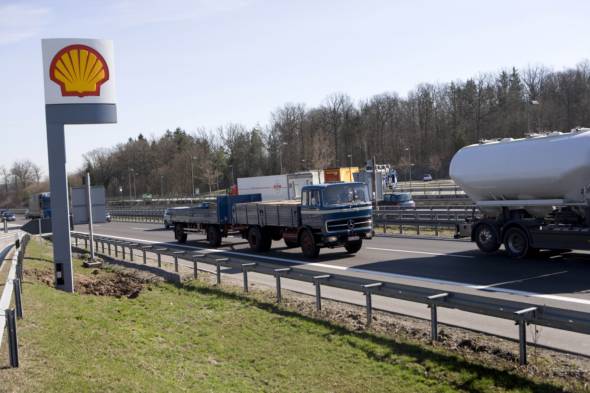
Other features of the Actros which played a crucial role in this test demonstrated the extent of the vehicle’s technical superiority over its ancestor and the degree of attention which is devoted to ride comfort today. Such features include the markedly improved soundproofing and air conditioning of the cab, tailor-made seating comfort and ergonomically designed controls, for example.

Methods of measuring drivers’ physical and mental strain
The overall effects of these benefits are felt by today’s professional truck drivers on motorways, on narrow country roads and in dense urban traffic. They can also be quantified using cutting-edge measuring methods. Researchers at Daimler have developed various methods of objectively evaluating a vehicle’s physiological safety. These are now being applied for the first time in the ongoing development of commercial vehicles.

The main focus is on physiological measurements of typical stress indicators, such as the driver’s heart rate. This is regarded as a reliable and continuously measurable cumulative indicator which provides an accurate reading of both mental and physical stress processes. Possible causes of an increased rate include stress due to heavy traffic, poor weather conditions and visibility. Equally, interior noise levels, inadequate ventilation and poor chassis comfort also have a negative impact.
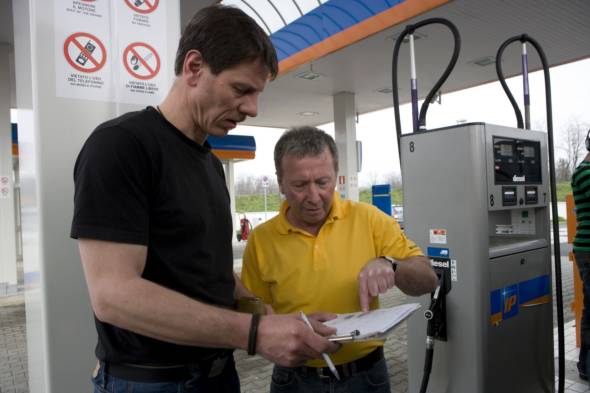
To enable the evaluation and ongoing improvement of these aspects, computers on board test vehicles and measuring devices on test drivers record all the values which provide an indication of the driver’s physical condition. These results add up to an objective picture of the way the vehicle’s engineering and technology affects the driver’s behaviour and his ability to drive effectively and safely.
Recording brain waves by means of EEG (electro-encephalography) provides information on mental stress in certain situations during a journey, such as narrow stretches due to roadworks or steep uphill and downhill driving.
 Cap with 16 sensors records brain waves
Cap with 16 sensors records brain waves
In the test “Actros versus LP 1620” the Daimler development engineers took a close look not only at the vehicles, but at the drivers, too. The test conditions called for professional drivers with decades of truck-driving experience. The selected “contestants” were aged 56 and 49, as the test was also intended to provide findings on whether age plays a decisive role with regard to the physical and mental stress involved in driving a truck.
Before the Actros and the LP 1620 hit the road, the drivers each donned an EEG cap fitted with 16 sensors to record their brain waves during the trip. The measurements began exactly half an hour after setting off for Lostallo, because for all the drivers’ professional experience, the Daimler researchers wanted to be sure that the test candidates had adjusted to the test conditions and rid themselves of any initial nervousness.
There were no signs of any nervousness on the long motorway stretches up to the Swiss border. The drivers reacted in almost identical fashion to the acoustic signals which were deliberately transmitted almost unnoticeably to their ears. These signals consisted of a sequence of random tones consisting of 80 percent 1000 Hertz tones and 20 percent 2000 Hertz tones.

The more exacting the driving situation, the slower and less effectively the brain is able to process the rare 2000 Hertz stimuli. These changes can be measured with the aid of EEG. According to the EEG analysis, the drivers’ brains processed these stimuli quickly during this stage of the trip. This means that the drivers would be able to respond quickly if the signal were connected with the state of the vehicle or the traffic situation.

Minimal mental strain in the Actros
The electrodes diagnosed a quite different situation in the LP 1620 during the uphill stretch to the San Bernardino. 26 kilometres of winding road with numerous tight spots and dark tunnels placed such demands on the driver’s concentration that cognitive processing of the transmitted tones was slowed down by more than 300 milliseconds. Virtually the same findings resulted when the older driver took command of the LP 1620 on the uphill and downhill stretch to the San Bernardino during the return leg on the following day. His readings were only negligibly higher than those of the younger driver.

The two drivers reacted quite differently at the wheel of the Actros, however. Even during the high-stress phase around the Swiss mountain pass, the perception time for the signal tones slowed down only negligibly – and only for the older driver. The younger driver displayed a constant, fast response time throughout the entire journey.

The retardation in processing of the stimuli in the LP 1620 in comparison to the Actros amounted to as much as 400 milliseconds. While this may appear minimal, when this value is placed in the context of the cognitive sequence “perceive signal – respond” or “see brake light, perceive meaning and brake oneself” it results in the brakes being applied nine metres later in a truck travelling at 80 km/h.

Only negligible rise in pulse at the wheel of the Actros
ECG analysis of the two drivers also demonstrated the extent to which technical advances relieve the strain encountered at the wheel of a truck. The heart rate – essentially the mirror of physical stress – increased by ten percent in the younger driver at the wheel of the LP 1620 in comparison to when driving the Actros.
The older driver’s heart beat 20 percent faster on the uphill stretch to the San Bernardino. This is where the age difference was most clearly apparent, as it is not only the high steering effort and the non-synchromesh manual transmission that call for a good physical condition. The younger driver enjoyed an additional benefit on the return trip in the Actros.
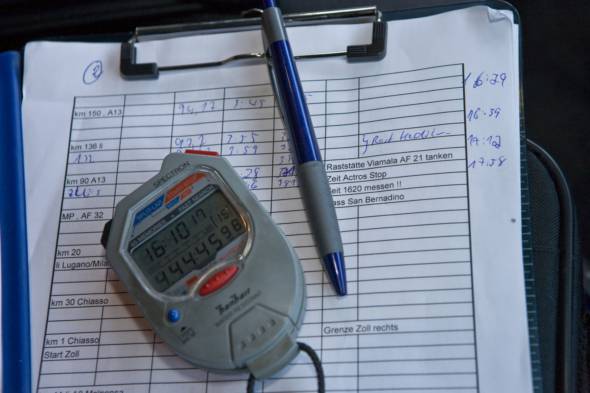
Thanks to the high power reserves of his tractor, he was able to set off half an hour later than his colleague in the LP 1620. The 40-tonner negotiated the bends leading to the San Bernardino tunnel at an average speed of 40 km/h – twice as fast as the LP 1620 with its permissible gross weight of 32 tonnes. By the time he reached the top of the road, he had already caught up with his colleague. And he managed to stay relaxed throughout the ascent, as the subsequent analysis of the ECG and EEG curves showed.





